If you happened to be in New York and pass through Union Square between 1917 and 1920, there’s a big chance that you would have seen a huge ship placed there. While it wasn’t exactly seaworthy, it had all the things a regular ship would have. Here is the story about why it was placed there:
The American entry into World War I was in April 1917, after two and a half years of efforts by President Woodrow Wilson to keep the United States neutral. The readiness and capability of the U.S. Navy were a matter of controversy back in those days. The press at the time reported that the only thing the military was ready for was an enemy fleet attempting to seize New York harbor — at a time when the German battle fleet was penned up by the Royal Navy.
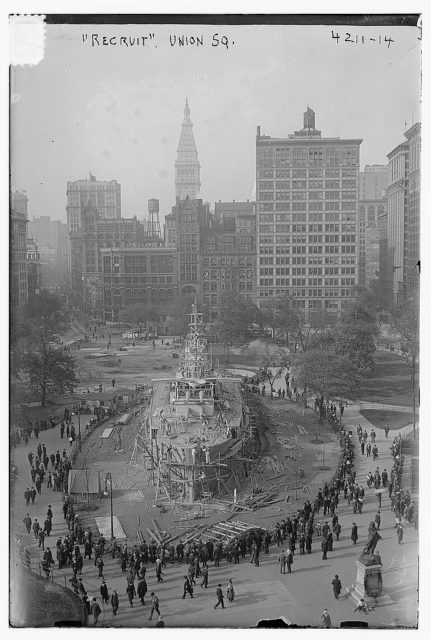
The Navy Secretary back then was Josephus Daniels, a journalist with pacifist leanings. He had built up the educational resources of the Navy and made its Naval War College in Newport, Rhode Island – a very important institution for aspiring admirals. However, he lost the loyalty of the officer corps with his moralistic reforms, including banning wine in the officers’ mess, and hazing at the Naval Academy, as well as adding more chaplains and YMCAs.
Daniels, as a newspaperman, knew the value of publicity. In 1915 he set up the Naval Consulting Board (headed by no other than Thomas Edison himself), to obtain the advice and expertise of leading scientists, engineers, and industrialists. It popularized technology, naval expansion, and military preparedness, and was well covered in the media.
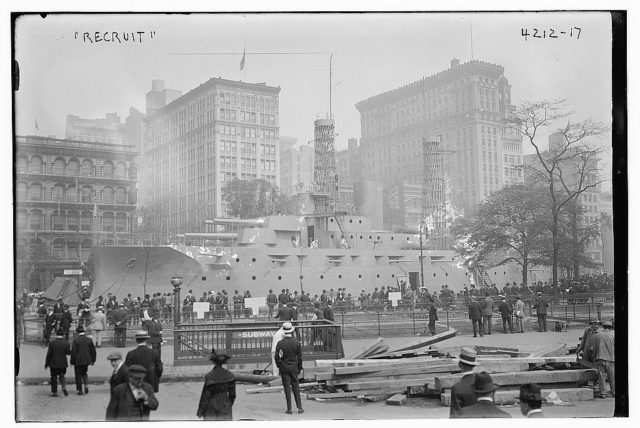
The following images depict the USS Recruit during its “service” in Union Square. All of the photos are obtained from the George Grantham Bain digital Collection in Library of Congress.
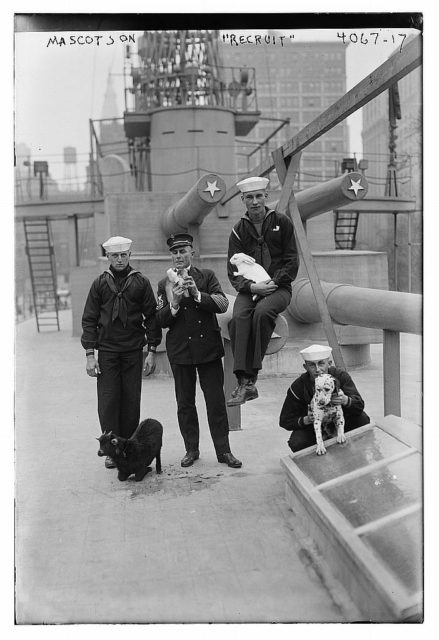
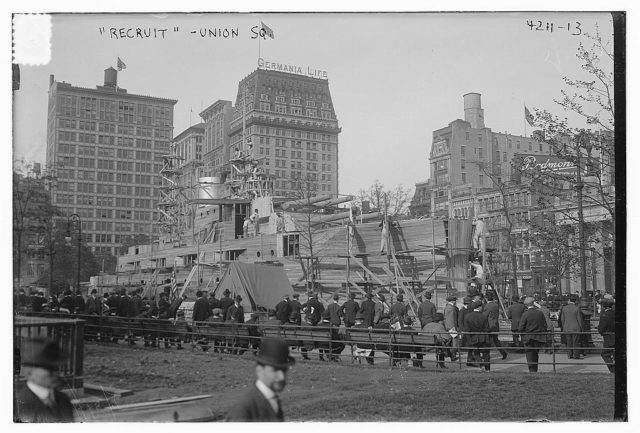
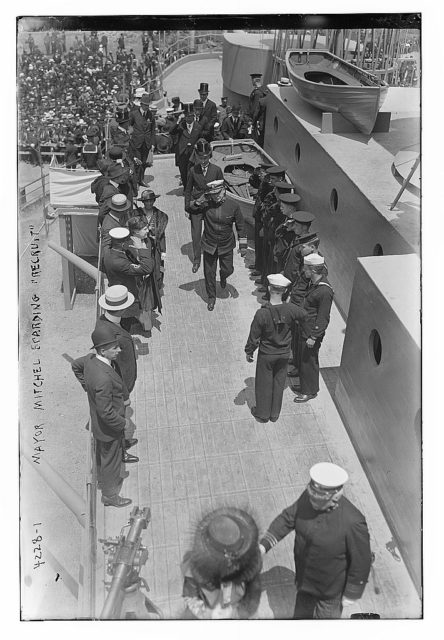
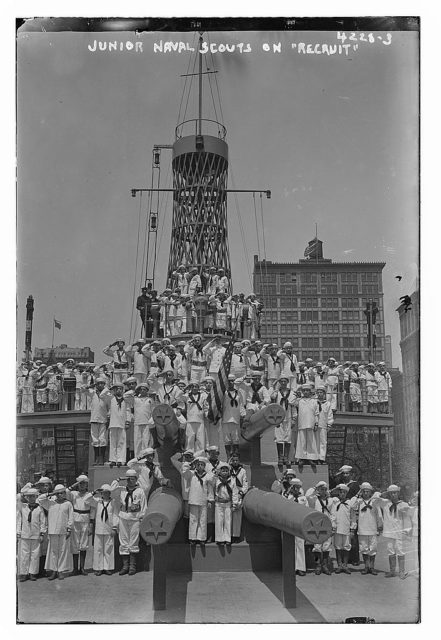
After the war was finished, Admiral William Sims stated that in April 1917, only ten percent of the Navy’s warships were fully manned; the rest lacked 43% of their seamen. The navy was desperate for manpower. They encouraged young American to enlist in the navy and help the war effort. A significant part of the whole propaganda campaign was a strange ship called the USS Recruit.
In 1917, the U.S. Navy, under the leadership of Josephus Daniels, decided to build a full-size battleship in Union Square, New York. The structure would stay there for the next three years, until after the end of the war. The ship was intended to serve as a recruitment and training center. Operating as the U.S. Navy’s headquarters for recruiting in the New York City district, Recruit was a “fully fitted” battleship and was operated as a commissioned ship of the U.S. Navy.
The USS Recruit was under the command of Acting Captain C. F. Pierce, and had a complement of thirty-nine bluejackets from the Newport Training Station as crewmembers. The accommodations aboard Recruit included a spacious waiting room, fore and aft medical examination rooms, full officer’s quarters, a wireless station, a heating and ventilation system that was capable of changing the temperature of the air inside the ship ten times within the span of an hour, and cabins for the accommodation of the sailors.
The whole battleship was constructed from wood. The USS Recruit carried two high cage masts, a conning tower, and a single dummy smokestack that matched Recruit’s silhouette to the layout of seagoing U.S. battleships of the time. Three twin turrets contained a total of six wooden versions of 14-inch (360 mm) guns, providing the ship’s ‘main battery’. Ten wooden 5-inch (130 mm) guns in casemates represented the secondary anti-torpedo-boat weaponry of a battleship, while two replicas of one-pounder saluting guns completed the ship’s ‘armament’. All of its armaments matched the standard configuration of battleships of the time.
The Popular Science magazine did an article about the Recruit in its August 1917 edition. They described the routine onboard this mockup battleship:
“… life aboard the Recruit is one of ordinary naval routine. The land sailors arise at six o’ clock, scrub the decks, wash their clothes, attend instruction classes, and then stand guard and answer questions for the remainder of the day. There is a night as well as a day guard. From sundown to eleven o’ clock, all lights of the ship are turned on, including a series of searching projectors.”
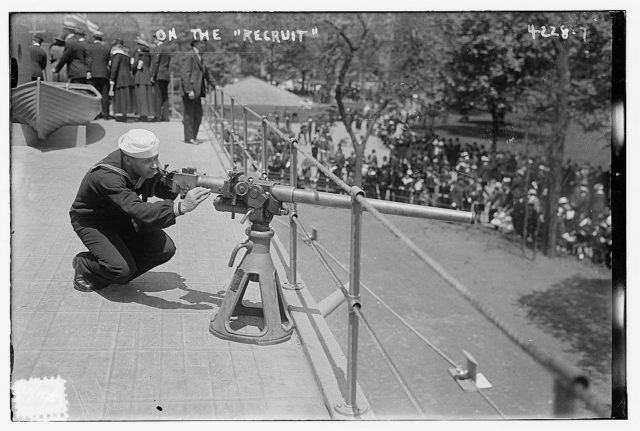
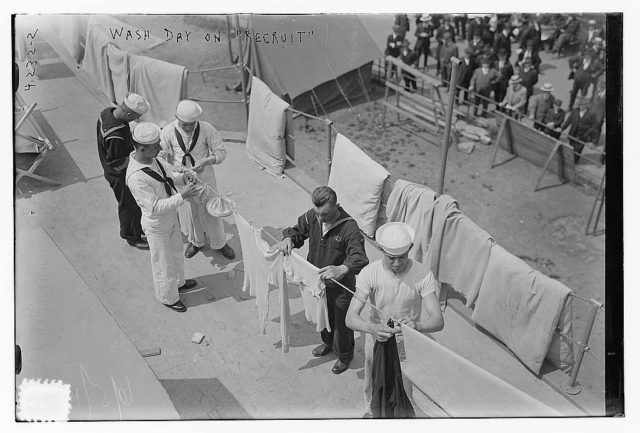
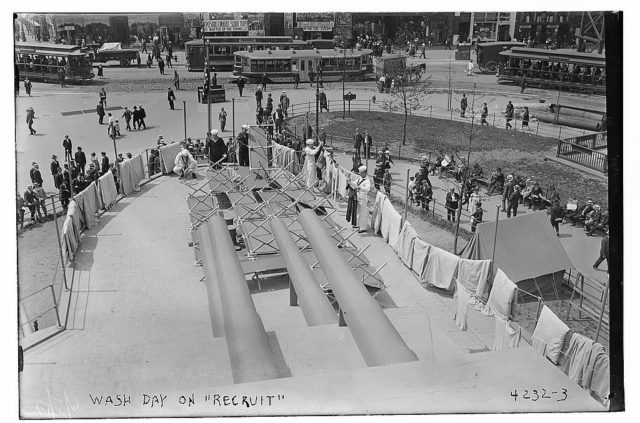
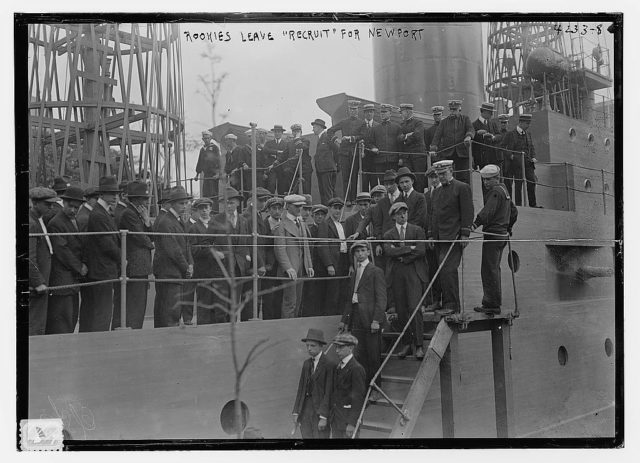
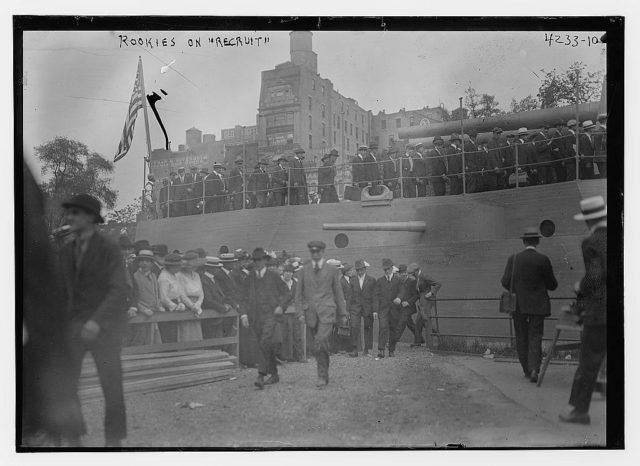
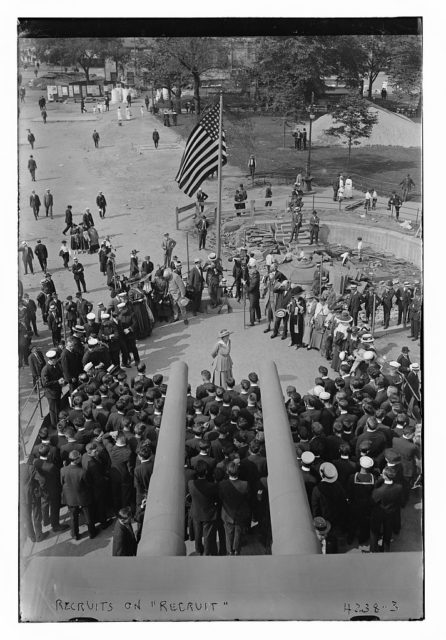
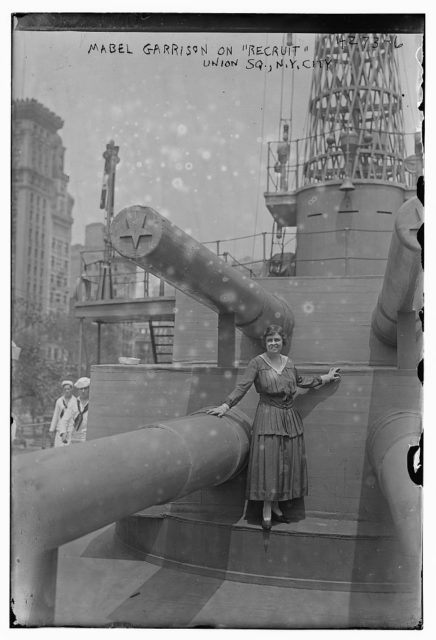
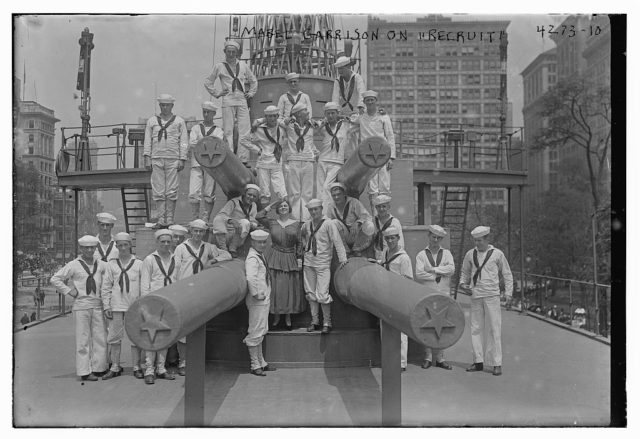
Besides its recruitment and training mission, on certain days the ship was opened to the public and offered tours around its facilities. The USS Recruit also hosted a variety of social events and receptions, including christenings, patriotic speeches, dances for New York’s socialites, and visits by various dignitaries – for example, a group of Native Americans, and the woman’s motor corps.
The most important mission of this battleship was, of course, to help with the recruitment and training of future American sailors. The figures showed that the Recruit succeeded in its mission; it helped with the recruitment of 25,000 men into the U.S. Navy.
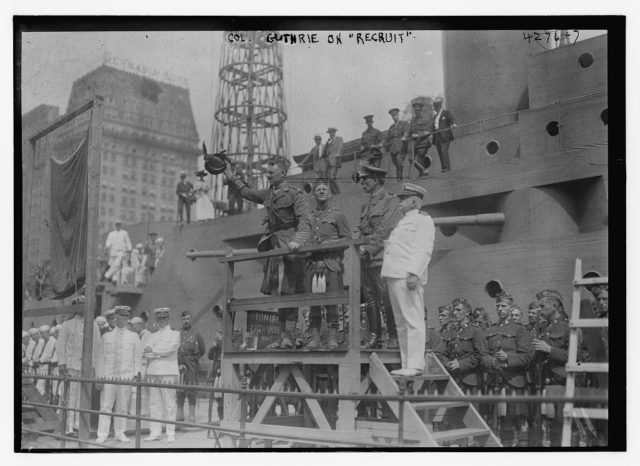
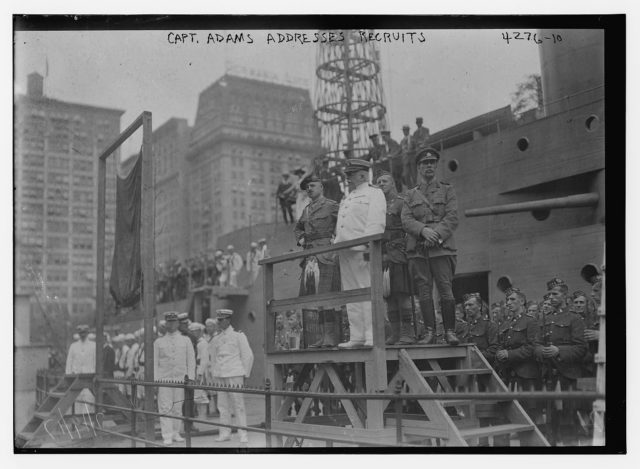
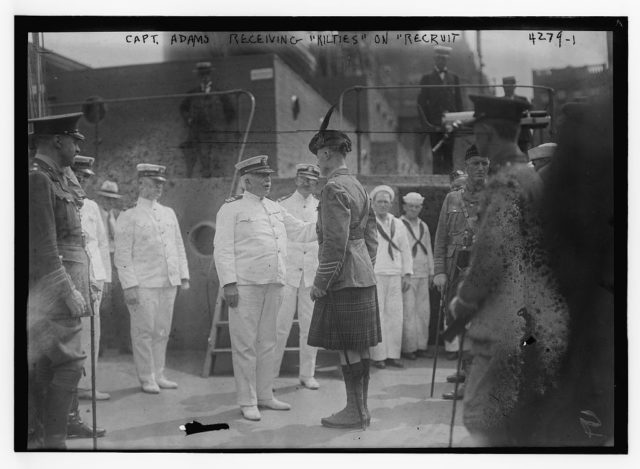
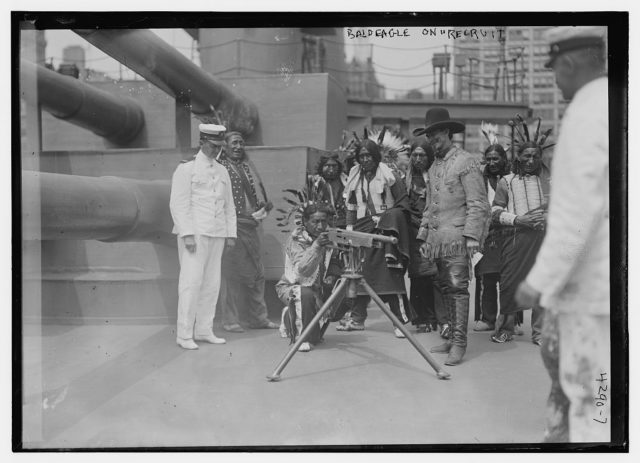
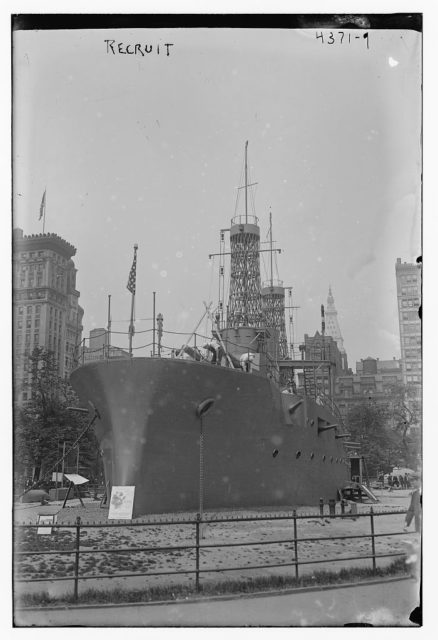
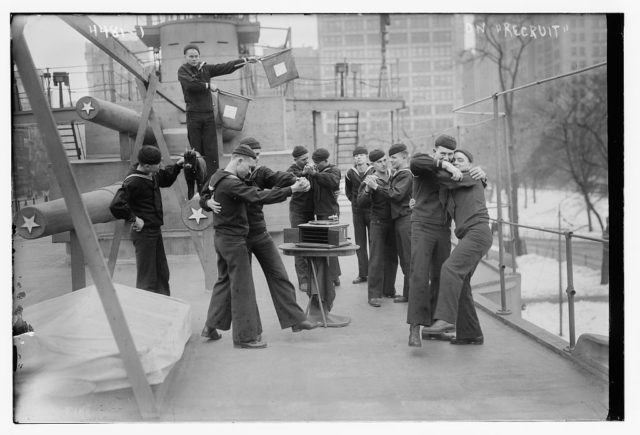
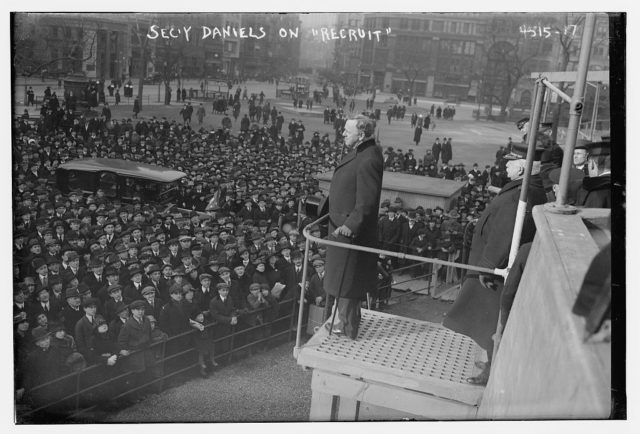
When the war ended in 1918, the Landship Recruit was no longer needed. However, the ship stayed in Union Square until 1920. The Recruit was decommissioned and dismantled for moving to Coney Island’s Luna Park, where the Navy intended to maintain it as a recruiting depot. The Recruit was properly decommissioned on 16 March 1920, and preparations began for the move. However, the ultimate fate of Recruit after its move is undetermined. The ship never arrived on Coney Island.
